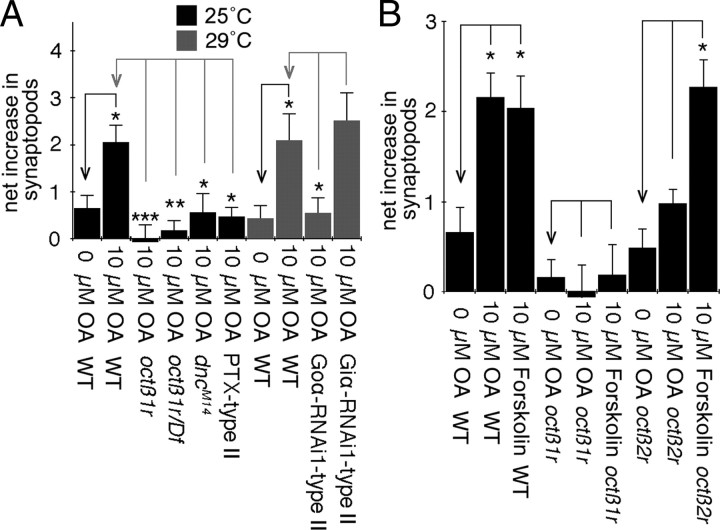Figure 5.
octß1r mutation or disruption of Goα function likely results in saturating levels of cAMP. A, Quantification of the net increase of synaptopods per 100 μm of type II arbor in response to exogenous octopamine application in octß1r mutants, dnc mutants, and animals expressing PTX, Goα-RNAi, or Giα-RNAi in type II, showing that bath application of octopamine increases synaptopods in control and Giα-RNAi animals, but not in animals with disrupted Octß1R or Goα pathway, which have increased natural synaptopods [N (left to right) = 14, 13, 12, 10, 10, 11, 12, 11, 19, 10 NMJs]. Animals used in RNAi experiments were reared at 29°C to increase knockdown efficiency. B, Quantification of the net increase of synaptopods per 100 μm of type II arbor in response to exogenous octopamine or forskolin application in octß1r mutants and octß2r mutants, showing that bath application of octopamine fails to increase synaptopods in both octß1r and octß2r, whereas bath application of forskolin increases synaptopods in octß2r but not in octß1r. This indicates that the lack of response to octopamine in octß1r is likely due to saturating levels of cAMP [N (left to right) = 14, 13, 11, 10, 12, 13, 11, 13, 10 NMJs]. Error bars indicate SEM. ***p < = 0.0001; **p < = 0.001; *p < 0.05.

